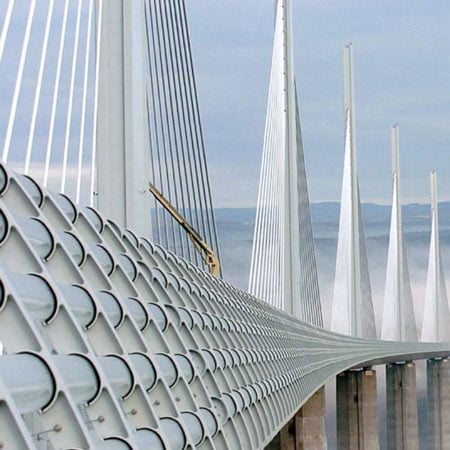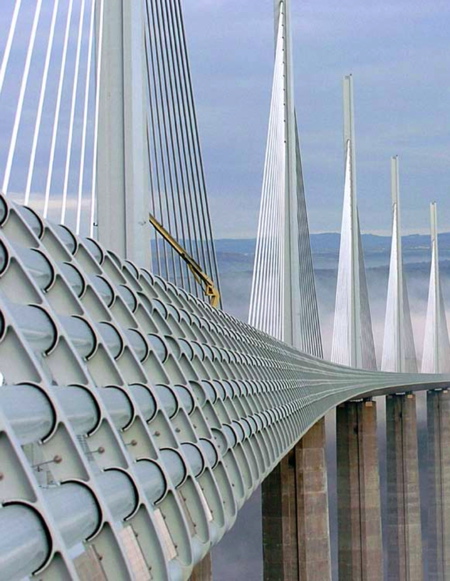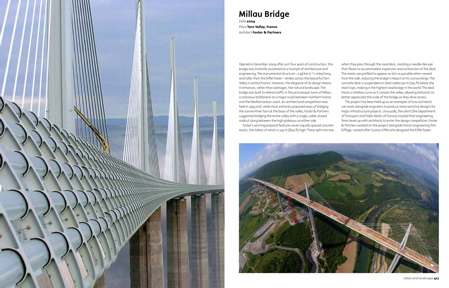
Millau Viaduct by Foster & Partners
Twenty-First Century icons: we're still on holiday, so here's another chapter from Marcus' book, Twenty-First Century Design.
Millau Bridge
Date 2004
Place Tarn Valley, France
Architect Foster & Partners
Opened in December 2004 after just four years of construction, this bridge was instantly acclaimed as a triumph of architecture and engineering.
The monumental structure – 2.46 km (1.5 miles) long and taller than the Eiffel Tower – strides across the beautiful Tarn Valley in central France. However, the elegance of its design means it enhances, rather than damages, the natural landscape.

The bridge was built to relieve traffic in the picturesque town of Millau, a notorious bottleneck on a major route between northern France and the Mediterranean coast.
An architectural competition was held in 1993 and, while most entrants proposed ways of bridging the narrow River Tarn at the base of the valley, Foster & Partners suggested bridging the entire valley with a single, cable-stayed viaduct slung between the high plateaux on either side.

Foster’s winning proposal features seven equally spaced concrete masts, the tallest of which is 245 m (804 ft) high. These split into two when they pass through the road deck, creating a needle-like eye that flexes to accommodate expansion and contraction of the deck.
The masts are profiled to appear as slim as possible when viewed from the side, reducing the bridge’s impact on its surroundings. The concrete deck is suspended on steel cables 90 m (295 ft) below the mast tops, making it the highest road bridge in the world. The deck traces a shallow curve as it crosses the valley, allowing motorists to better appreciate the scale of the bridge as they drive across.
The project has been held up as an exemplar of how architects can work alongside engineers to produce more sensitive designs for major infrastructure projects.

Unusually, the client (the Department of Transport and Public Works of France) insisted that engineering firms team up with architects to enter the design competition. Foster & Partners worked on the project alongside French engineering firm Eiffage, named after Gustav Eiffel who designed the Eiffel Tower.

Taken from Twenty-First Century Design by Marcus Fairs, published by Carlton Books